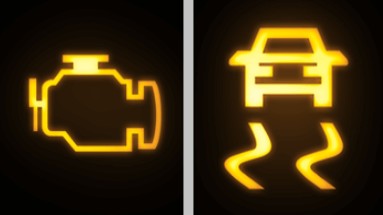The Electronic Power Control (EPC) light in your Volkswagen Taos is a crucial indicator from your vehicle’s onboard computer. Essentially, it’s a warning signal alerting you to a potential issue within the electronic system that manages your engine’s performance. Seeing this light illuminate shouldn’t be ignored, as it signifies that your Taos has detected a problem that needs attention. While it could be something as minor as a faulty brake light bulb, it could also point to more significant issues affecting your engine’s throttle control. Therefore, the most effective first step to accurately diagnose the problem is to use a diagnostic scanner to read your car’s error codes. Attempting to pinpoint the exact cause without this step can be a challenging and time-consuming process.
The EPC system is integral to modern vehicles that utilize electronic throttle control. In systems like these, the accelerator pedal doesn’t directly connect to the engine’s throttle via a cable. Instead, it relies on sensors, primarily the Throttle Position Sensor (TPS), and an actuator, which is essentially a small electric motor. The EPC system’s core function is to regulate the throttle body opening based on signals it receives, most importantly from the throttle sensor. This electronic management is key to optimizing fuel efficiency and reducing emissions in your Volkswagen Taos.
Beyond the throttle sensor, the EPC system also integrates data from various other engine sensors. These include vital components like the crankshaft position sensor (CKP), which monitors engine speed, the manifold absolute pressure (MAP) sensor, measuring air pressure in the intake manifold, the mass air flow (MAF) sensor, gauging the amount of air entering the engine, and the knock sensor, which detects engine knocking. All these inputs contribute to the EPC’s comprehensive control over engine performance.
Typically, the EPC light will briefly illuminate when you first turn the ignition key, serving as a bulb check. It should then turn off. However, if the EPC light remains lit after starting the engine, or if it illuminates while you are driving, it indicates a malfunction within the electronic acceleration system. Alongside the light, you might experience noticeable symptoms such as engine jerking, misfires, or a reduction in engine power.
Given the interconnected nature of the electronic acceleration system with other vehicle systems, it’s not uncommon for the EPC light to appear in conjunction with other warning lights on your Taos dashboard. You might also see the check engine light or the Electronic Stability Control (ESC) light illuminate simultaneously. These additional lights further emphasize the need for prompt diagnosis.
 Dashboard lights including Check Engine and Stability Control
Dashboard lights including Check Engine and Stability Control
In some cases, to protect the engine from potential damage, the car’s computer might limit engine power and acceleration when the EPC light is triggered. This could result in a noticeable lack of responsiveness when you press the accelerator pedal. The severity of the issue and the accompanying symptoms can vary considerably, highlighting the importance of a timely diagnostic scan to retrieve error codes and initiate the necessary repairs.
Frequently encountered reasons for the EPC light to activate on a Volkswagen Taos include:
- Dirty Throttle Body: Carbon buildup and grime on the throttle body can impede its proper function and trigger the EPC light.
- Faulty Throttle Sensor: A malfunctioning throttle sensor can send incorrect signals to the EPC system, leading to errors.
- Damaged Throttle Position Sensor (TPS): The TPS, often integrated with the throttle body, can fail and disrupt throttle control.
- Defective Throttle Body Actuator: The actuator motor that physically moves the throttle plate can malfunction.
- Malfunctioning Brake Pedal Switch: The brake pedal switch communicates brake pedal position to the car’s computer, and issues here can sometimes trigger the EPC light due to system interdependencies.
- Burnt Out Brake Light Bulb: In some older vehicle designs, a burnt-out brake light bulb can, surprisingly, trigger the EPC light. While less common in modern cars like the Taos due to improved computer systems, it remains a possibility in some scenarios.
While the latter two causes related to the brake system might seem unusual, they stem from the way earlier Engine Control Units (ECUs) were programmed. Modern vehicles, including the Volkswagen Taos, generally have more sophisticated systems that are less prone to such indirect fault triggers. However, the most reliable way to determine the exact cause of your Volkswagen Taos Epc Light is always to perform a diagnostic scan and consult with a qualified automotive technician.